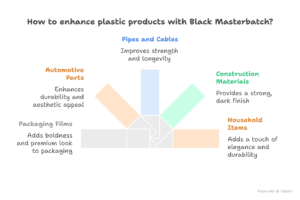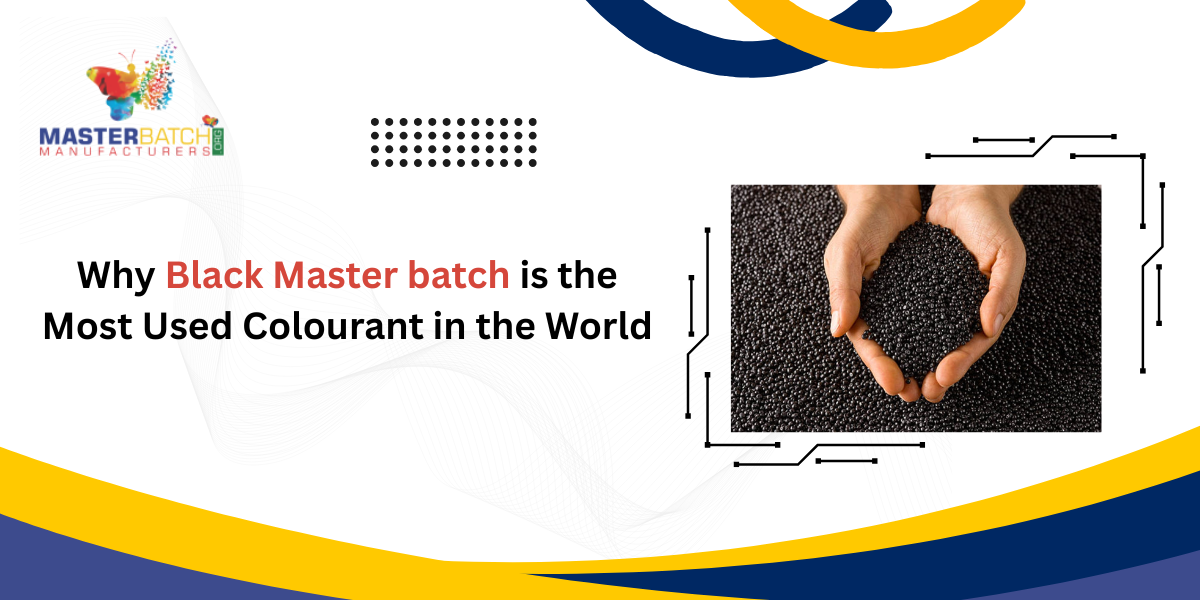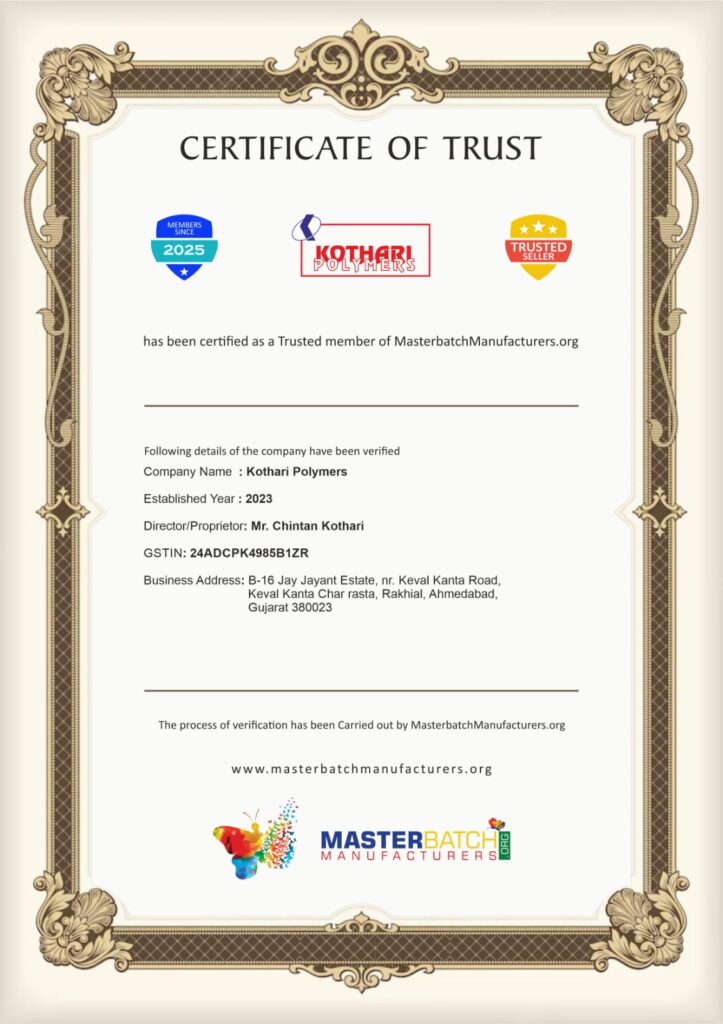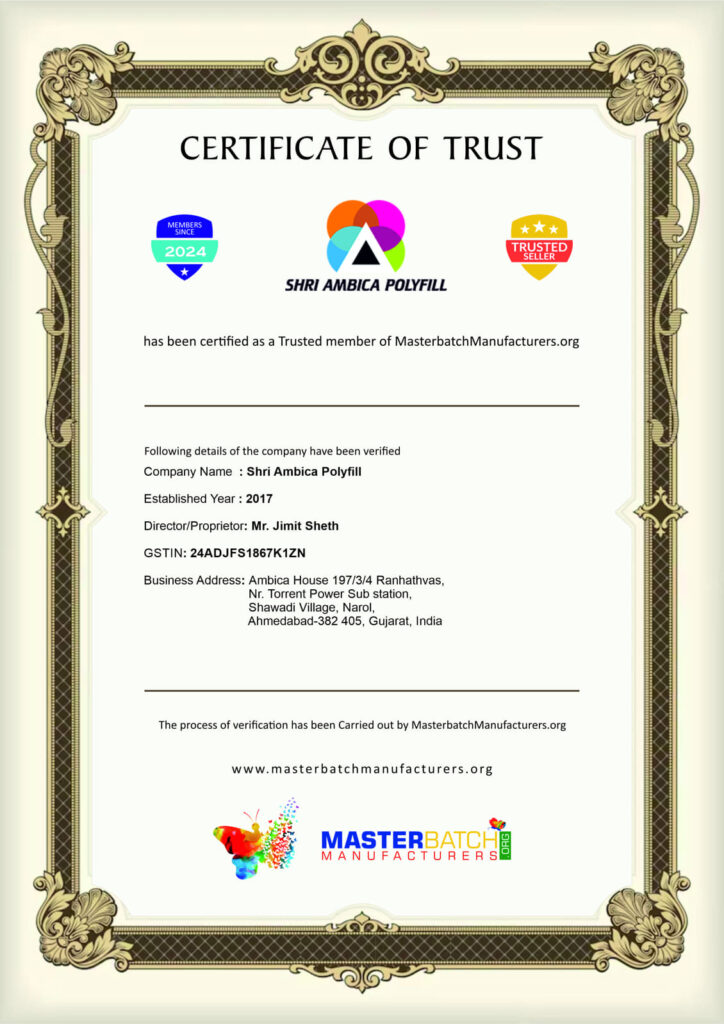You must’ve noticed something – from car dashboards to simple water pipes, from shiny food wrappers to household containers – black is literally everywhere. But what makes that deep, smooth black shade possible? Well, it’s because of something called Black Master batch.
It might sound technical, but trust me, it’s not that complicated. It’s basically a mixture – a concentrated blend of carbon black pigment and a plastic base material. When manufacturers add it to plain plastic, it transforms the color, improves durability, and even adds UV resistance. In short, it’s the reason black products look sharp and last longer.
What is Black Master batch, to Be Precise?
Let’s decompose it step by step. Visualize that you are in possession of unprocessed plastic -plain, transparent, and boring. Now, to make it look strong and rich in color, you add Black Master batch. It’s like adding a bit of magic dust – suddenly, the product becomes bold, dark, and premium.

This magic is widely used in:
- Packaging films and bags
- Automotive parts
- Pipes and cables
- Construction materials
- Household items
Honestly, if you start noticing, you’ll realize – it’s everywhere.
Why Black Master batch Rules the Color World
Let’s be frank, there are hundreds of colourants out there. Yet, the Black Master batch remains the king. Why? Because it does more than just color.
1. Deep, Solid Color Every Time
No matter how many batches you make, the color stays uniform. Carbon black gives that deep, non-fading shade that looks classy and consistent.
2. UV Protection That Actually Works
Sunlight ruins plastics. It can lead to several problems such as It can lead to several problems such as cracks, fading, brittleness, etc. But all these issues can be solved with the help of carbon black, as it absorbs the UV ray’s thus retaining the quality and durability of your products.
Be kind, that’s quite a favour for outdoor plastics.
3. Saves Your Money
Here’s the part businesses love. Instead of using pure pigments (which cost more), Black Master batch gives better coverage with less quantity. So yeah, less expense, same result.
For example, if plain plastic resin costs around ₹120 per kg, and Black Master batch costs ₹60 per kg – mixing 30% of it can easily bring your average cost down by ₹18–₹20 per kg. That’s serious savings without losing quality.
4. Smooth and Glossy Finish
Let’s be honest, nobody likes uneven color patches. The master batch is of a very high quality since it is mixed with molten plastic evenly, and thus the surface is smooth and the finish is of high quality. That’s why it’s used in automobile interiors, bottles, and cables.
5. High Heat Resistance
This little pellet can handle high processing temperatures. It doesn’t break down or burn easily. That’s why it fits perfectly for injection moulding, extrusion, or even film blowing.
The Real Science Behind the Magic
You know what’s interesting? It’s not just black pigment doing the job – it’s the particle size.
The carbon black used in Black Master batch has ultra-fine particles with a huge surface area. This gives the material better color strength, opacity, and protection from UV light.
In simple words, smaller particles, better performance.
That’s why you see such rich black in things like phone chargers, electronics, and automotive parts. Looks fancy, performs even better.
Black but Green – The Sustainability Side
People used to say black plastic can’t be recycled easily. Fair point – that was true earlier. But times have changed.
The present-day Black Master batch is created using non-toxic pigments and carriers that can be recycled. So, it might be black, but it still bolsters the environmentally friendly side of production.
Companies now develop master batches that can be detected by recycling sensors – meaning less waste, more reuse. Nice twist, right?
Where It’s Commonly Used
Just to give you an idea, here are some major areas where Black Master batch plays a big role:
- Agriculture films: For UV resistance and strength
- Cables and pipes: For insulation and heat endurance
- Automotive interiors: For a rich, dark finish
- Packaging: For opacity and a premium look
- Textile fibres: For long-lasting deep color
Basically, if something’s black and plastic, it’s most likely got Black Master batch inside.
How It Helps in Cost Efficiency
Manufacturers love numbers. And here’s where Black Master batch helps big time.
Instead of using pure pigment, which costs more and needs more quantity, they add just a small amount of master batch (about 2–5%).
That’s enough to get the desired black tone and properties – saving both money and material.
Jokes apart, this small switch has saved industries crores globally.
The Future of Black Master batch
It’s only getting better. New versions are coming out that are:
- Recyclable
- Bio-based
- Odor-free
- Designed for smart manufacturing
The focus now is on sustainability and precision. To be frank, the future looks darker – in the best way possible. Check top-grade Black Master batch solutions to upgrade plastic production.
Follow us on Instagram and Facebook for product updates and manufacturing insights.
Conclusion
If you think about it, Black Master batch is not just a colouring agent. It’s a protector, a cost-cutter, and a quality enhancer all in one. It helps plastic products look better, last longer, and perform stronger.
No wonder it’s called the most used colourant in the world. It’s simple, effective, and affordable – everything the plastic industry loves.
And to be real, once you understand its value, you’ll never look at a black plastic product the same way again.
FAQs
- What makes Black Master batch so special?
Let’s be honest – it’s easy to use, gives deep color, and protects from sunlight. That’s a perfect combo for any manufacturer.
- Can I use it with all types of plastic?
Yes, mostly with PE, PP, PS, and PET. Just pick the right carrier resin for the best results.
- Does it affect recycling?
Not anymore. New formulations are totally recyclable and eco-friendly.
- Why do companies prefer it over pigment powder?
Pigment powders are messy and inconsistent. Master batch is neat, precise, and cost-effective.
- How much Black Master batch should I use?
Usually 1–5%. But yeah, depends on how dark you want it to look.






